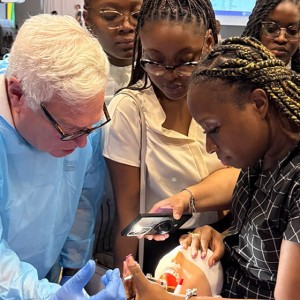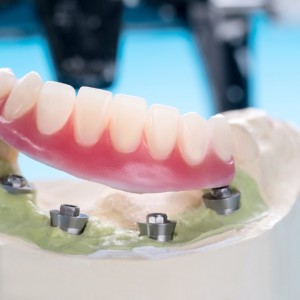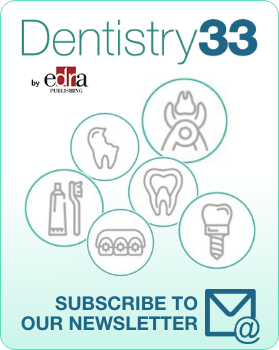
Penn Dental Medicine Researchers Leveraging Far-Flung Taste and Smell Sensors
The taste buds of the tongue contain bundles of specialized cells bearing sensors that detect chemical attributes of food. Known as taste receptors, these sensors were long believed to reside only on the tongue. Marco Tizzano, an associate professor in the Department of Basic & Translational Sciences at Penn Dental Medicine, was among those who discovered them in many other places in and on the body.
He has since documented taste receptors throughout the airways, especially in the nose, but also the trachea and the lungs, as well as the gums and even dental pulp. These sensors, he and others have found, detect bacterial pathogens and allergens, then alert the innate immune system.
Tizzano’s research has shown that bitter-sensing taste receptors in the nose respond to a compound bacteria use to communicate. These sensors then activate the trigeminal nerve, a cranial nerve that provides sensation to the face, leading to a significant inflammatory response.
Bitter taste receptors also show up in the gums. In experiments, Tizzano’s research team demonstrated that in gum tissue these receptors actually offer some natural protection against periodontitis, the most severe form of gum disease. After sensing pathogenic bacteria, they trigger the production of antimicrobial peptides to kill the germs. Without these receptors, mice suffered from more damaging periodontitis, the researchers found.
In another line of study, Tizzano’s lab is looking at odor-detecting receptors found on neurons in dental pulp. When these relatives of the taste sensors detect eugenol, an odor molecule from cloves, they numb the teeth.
As someone who looks for connections between disciplines, Tizzano ultimately seeks to use naturally occurring compounds, such as eugenol, to stimulate these receptors in ways that benefit health. Such applications could include a new form of pain relief for dental procedures or a therapy to stifle the microbial growth triggering the inflammation that drives periodontal disease.
“I think we are still at the tip of the iceberg,” Tizzano says. “There is so much more to discover about these receptors.”
Source:
 Related articles
Related articles
Editorials 14 November 2025
Penn Dental Medicine shared its expertise in caring for persons with disabilities with dental care providers from throughout Jamaica at a 1 ½ -day hands-on continuing education program, held October...
Editorials 23 July 2025
The Center for Innovation & Precision Dentistry (CiPD) at Penn Dental Medicine proudly hosted its Fourth Annual CiPD Symposium on May 29 bringing together a dynamic community of dentists,...
Oral healthcare providers and patients will soon receive more frequent, evidence-informed recommendations to advance oral and overall health with the establishment of the ADA Living Guideline...
Editorials 26 May 2025
Groundbreaking program to provide evidence-informed guidelines in real time to support patient care and advance public health
Editorials 03 February 2025
White Coat Ceremony Welcomes New Class of Foreign Trained Dentists to Penn Dental Medicine
Penn Dental Medicine welcomed 38 foreign-trained dentists to the study of dental medicine as part of the DMD Class of 2027 with its White Coat Ceremony, held January 8 at Penn Dental Medicine.
 Read more
Read more
Prosthodontics 17 November 2025
The purpose of this report is to describe a new technique to fabricate and deliver an implant-supported fixed prosthesis to the patient on the day of surgery, and to propose a protocol for the...
Editorials 17 November 2025
The Langkamp Allison Award recognizes a Pitt Dental Medicine third-year dental student interested in pursuing a career in dental education.
Products 17 November 2025
VELMENI today unveiled VELMENI Voice, an AI-driven voice recognition tool designed to transform periodontal charting and clinical documentation.
News 17 November 2025
Angelalign Technology Inc. (6699.HK) (“Angel”) recently announced the expansion of its flexible iOrtho platform to include direct integration with the Dexis, Shining 3D, and Panda scanners.
News 17 November 2025
Following the first FDA clearance for technology that measures internal mobility in teeth, Perimetrics CEO and Chairman Robert Hayman is once again leading dentistry into a new era with InnerView, a...














